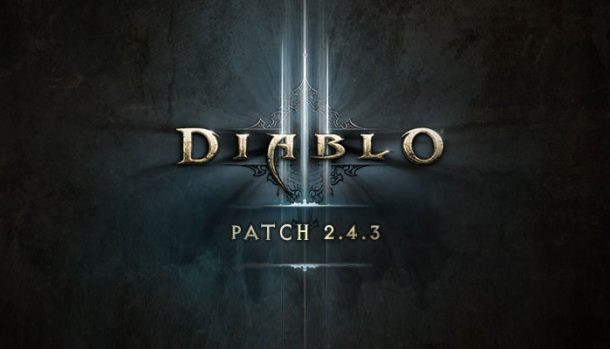Let’s go back through time, say 12 thousand years ago, when mammoths roamed our planet, and our ancestor’s every day was a fight for survival. Sounds like a cool premise for a first-person survival game? Well, Ubisoft beat you to it, because Far Cry Primal is exactly that – a game set in the Mesolithic period of Earth’s history where three human tribes wage war in an already inhospitable environment. You take on the role of Takar, a member of the Wenja tribe, and an experienced mammoth hunter. During one such hunt, your group is assailed by a giant saber-toothed tiger and you barely escape with your life after falling off a cliff. While wandering through the Oros valley, Takar finds out that the other members of Wenja tribe have been scattered all over the valley and decides to gather them once more to fight together against the two rival tribes.
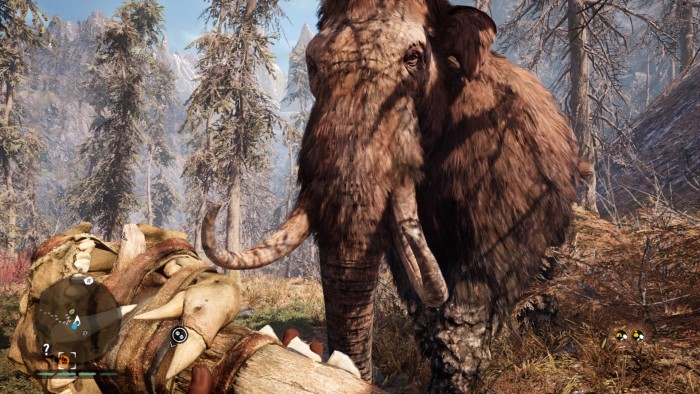
A big problem with this game is that for most of its duration you barely have any motivation to go on, because there’s barely any plot. In contrast to its two predecessors in which your goal was clear from the start and there’s a dose of panic and urgency to spur you on, Primal simply tells you to “go around, pick flowers, and while you’re there, pick up your tribesmen too.” After the initial mammoth hunting sequence, we have expected a true survival story to unfold, that the tiger might actively stalk after Takar, maybe even have the protagonist combat the encroaching hunger. There would be no direct plot progression if you didn’t meet a prettier (and crazier) member of the Wenja tribe. Ubisoft relied too much on the sandbox world aspect to occupy the player and completely missed an opportunity for an interesting narrative. We also can’t but notice how many borrowed mechanics from other games and general recycling from their other games there is. So, for example, by pressing a button all important objects will get a yellow overlay, while the rest of the screen desaturates, or unlocking parts of the map by conquering camps. While mentioning the map, it’s full of side quests, and after certain upgrades, icons of materials that you need.
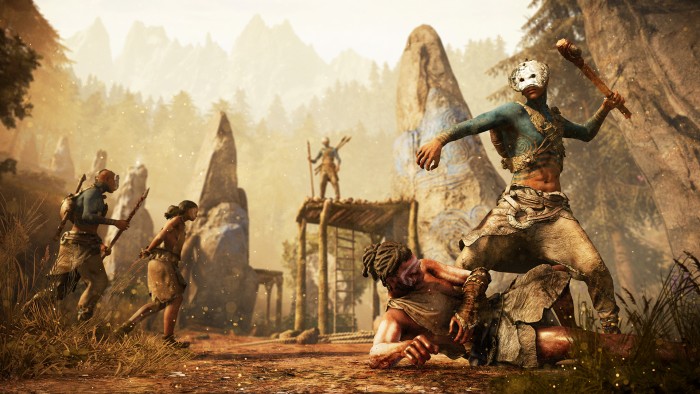
Gathering and crafting then, an everyday chore of the early man. You will be hard pressed to look around and not find something that you can gather, pick, or turn into lunch or a bag. The game’s world is full of animal and plant life, is convincingly designed and begs to be explored. Every little thing you collect or animal that you hunt is important, whether for your own survival in the wilds of Oros, for the progress of your village, or for upgrading your equipment. Your arsenal is prone to breaking during combat, so you’ll have to be on constant lookout for materials lest you run out of weapons in the middle of a fight. You will feel much more vulnerable than in previous games, because in this one you won’t face a raging bear with a salvo from a Kalashnikov, instead you’ll meet his teeth and claws armed with a club, or in a best case scenario, a sharpened spear. You’re going to encounter enemy patrols, but also your own tribesmen wandering the forest. Probably the most entertaining moments happen when an organic skirmish occurs, whether it’s a leopard chasing away a goat you were trying to hunt, or when inter-tribal warfare draws the attention of a particularly grumpy mammoth. Players seeking true challenge can turn off all indicators and hints from the game’s interface, making Primal a very difficult, yet interesting survival experience.
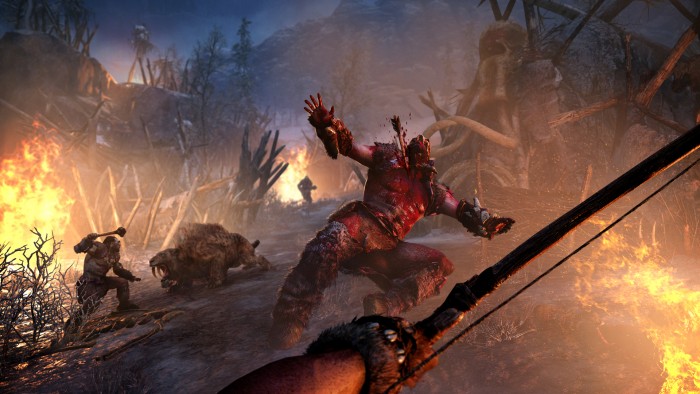
The animals might not look at you as lunch all the time (although they usually will), because the tribe shaman will teach you how to tame them. He’s completely crazy and we can’t help but feel that we’ve already seen him in previous Far Cry games, but under different names. After you enjoy a soup made of blood and guts, you’ll get a vision and, just like Pocahontas, learn to sing with the colors of the wind, or however that song goes. In short – you’ll become a beast master and your first companion will be an owl, serving as a prehistoric drone of sorts and allowing you to scout enemy territory and discover key locations. Throughout the game you’ll tame fifteen or so animals that will either fight at your side or serve as you mount. Nothing is quite like charging through an enemy camp on the back of a mammoth, while you snipe them with bow and arrow, and while your white wolf takes care of stragglers. We would have liked if the process of taming an animal was more interesting than simply baiting it with food and holding a button until the animal calms down and instantly becomes your bloodthirsty pet, but even this solution is not a problem, nor a hassle. Another cute option is the ability to scratch your tamed animals. True, it might be simply “Press X to pet a doggy”, but it’s hard to resist playing with your virtual beasts.
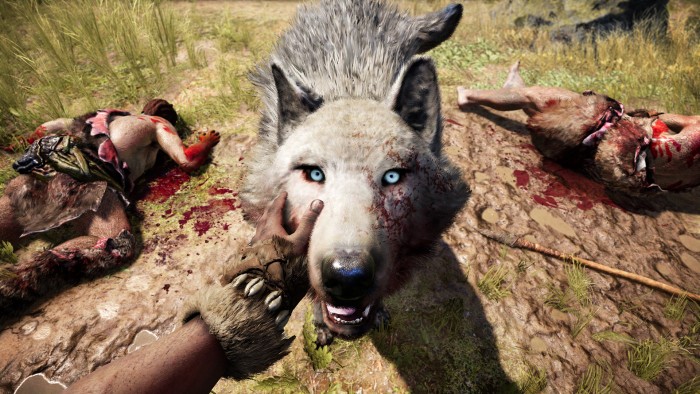
FarCry 3 was a great, daring move from Ubisoft to revitalize the franchise and make a sandbox game which we gladly play even after 4 years. The fourth game relied on the popularity of its predecessor and more or less offered the same, but slightly refined, experience. Sadly, Primal does not meet the lofty heights of its predecessors for the simple reason of being made as “Ubisoft: A Sandbox Game” with a world that begs for exploration, but with a hollow story that fails to intrigue and make you forget, even for a little while, that you’re basically playing the same game for a third time, only set in the stone age. Also, we shouldn’t forget that it’s competing with numerous other survival games, which to be fair don’t have the production values of Ubisoft, but just as well offer the same for a smaller price. So, our recommendation would be to wait for a sale and try out Primal then.
Author: Bojan Jovanović


